Spain, Gibraltar and Morocco
A trip from March 24 through April 12, 2008
| Chefchaouen |
|
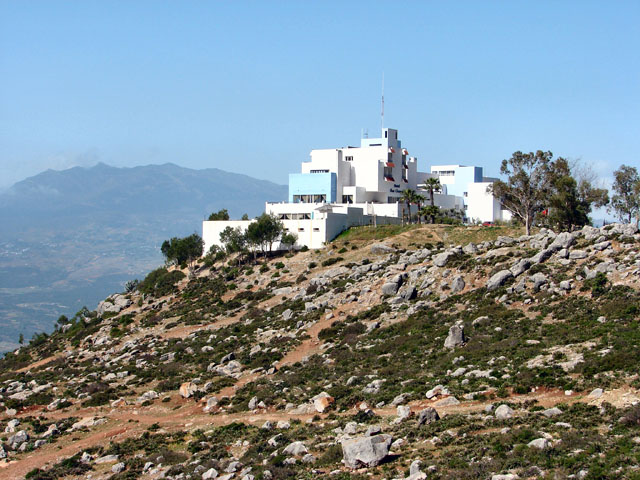 |
Chefchaouen
is located in the Rif (Red) Mountains. Its name refers to two
peaks, like ram's horns that dominate the local horizon. This is our hotel, Riad Atlas Chefchaouen, it has a great location, but it is not very tightly managed. Food was good, though. |
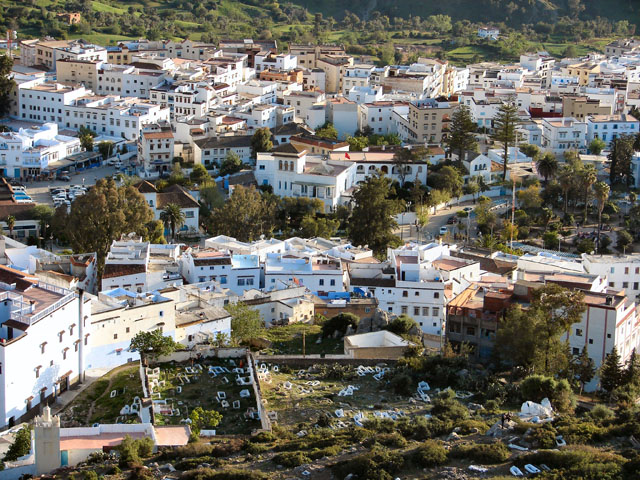 | The view of Chefchaouen from the hotel. Note the graveyard in the foreground. Chefchaouen is a Berber town, although the Berbers are now called "Amazigh," meaning "free people." Chefchaouen is also known for its cultivation of pot in the rugged hills surrounding the town. Presumably, this cultivation is done by free people. |
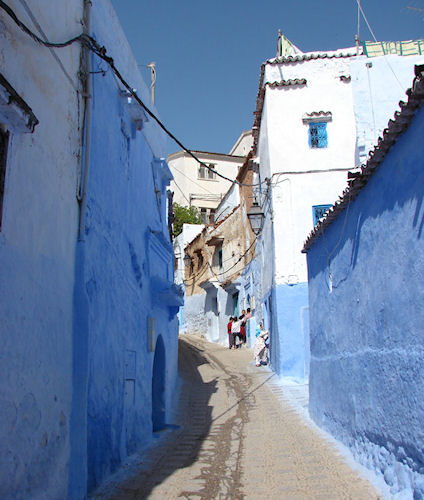 | The
medina of Chefchaouen is notable for its blue painted walls. The
blue color is supposed to be protection from the "evil eye" and related
sources of bad fortune. In some places, the blue only goes up
about 8 or 10 feet. Those are places where the women do the
painting. |
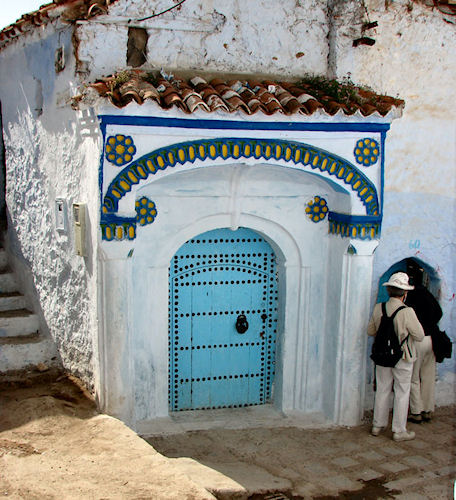 | Chefchaouen also has its saints. |
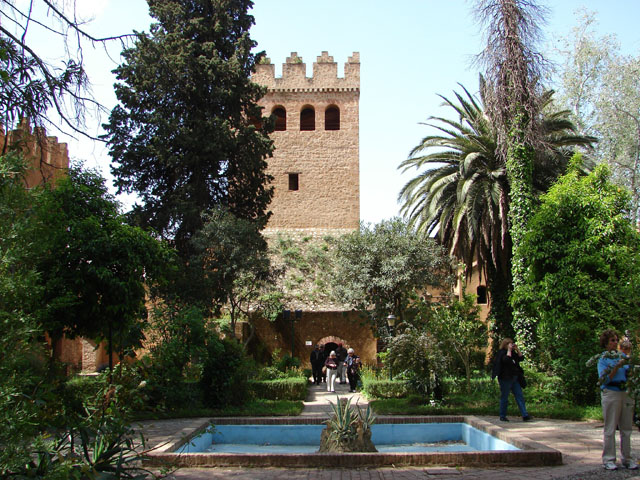 | Another
word explained: Casbah means fortress. Many medinas have a
casbah as an architectural anchor. This is the Chefchaouen casbah,
now a museum. Note the tower. |
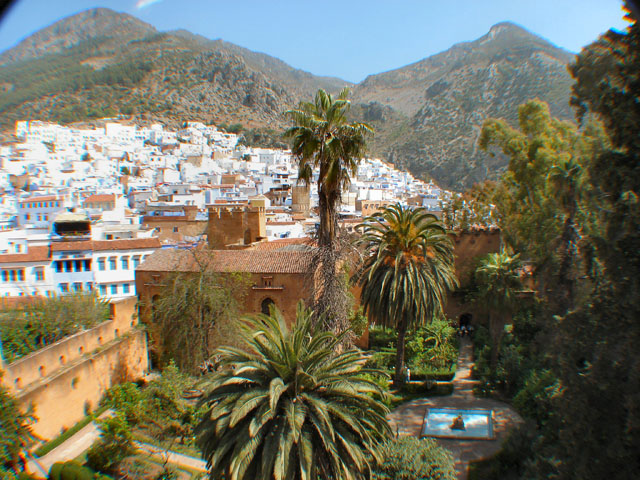 | This
picture was taken from the tower of the casbah, and it shows the local
terrain. These may be the ram's horn mountains. |
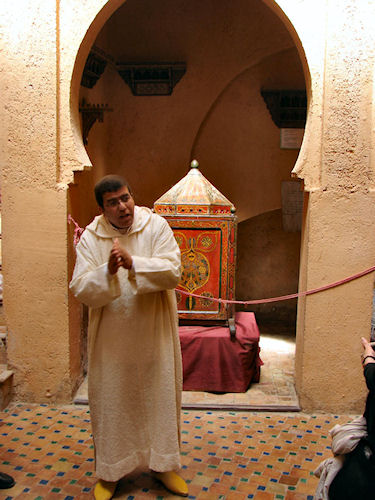 | This
is our Moroccan guide, and he is describing how his wife was brought to
his family's home in a box very similar to the one behind him. In
Morocco, part of the wedding ritual is transporting the bride to her
new family in this windowless box. |
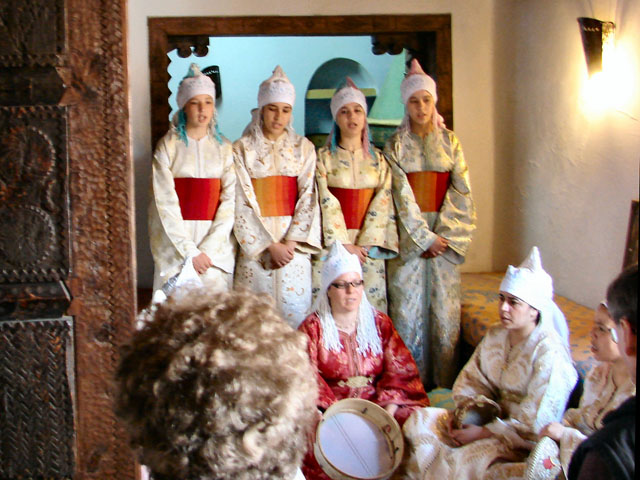 | This
was an unusual treat, a dinner concert by the Feminine Hadra Band, a well known group from
Chefchaouen. They sang traditional, Islamic songs, and we got to
hear ululation first hand. |
| In transit between Chefchaouen and Ouazanne | |
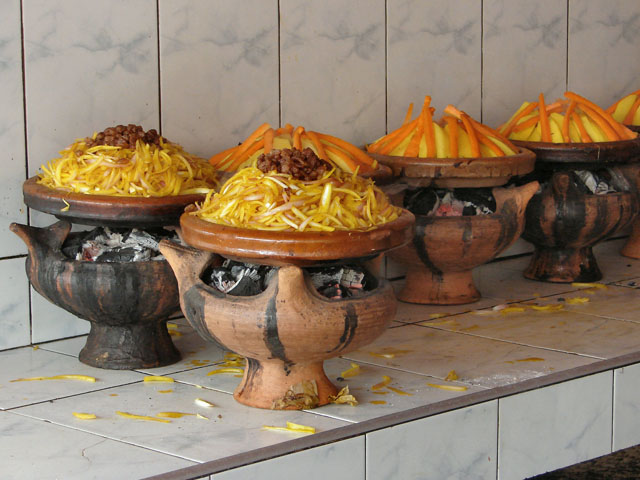 | The
tagine is the most characteristically Moroccan dish. Dish in the
sense of being a vessel, and dish in the sense of being a stew of meat,
couscous and vegetables. At a highway rest stop between Chefchaouen and Ouazanne, we saw these tagines being prepared. Note the charcoal fires beneath each tagine. |
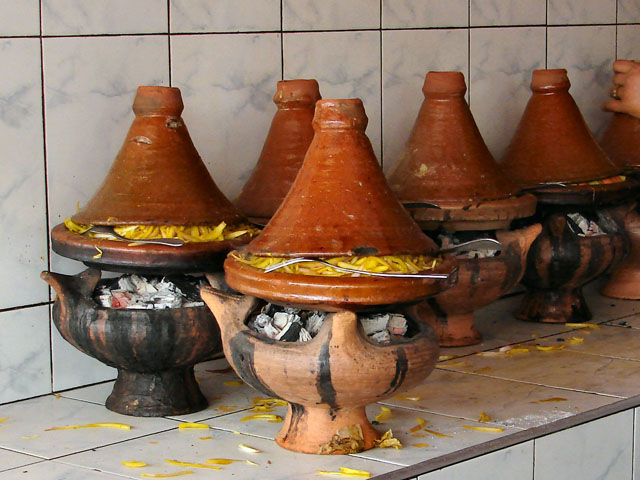 | With
the tagines all assembled, the characteristic conical top goes
on. This will all be ready when the lunch crowd arrives. |
| In Ouazanne | |
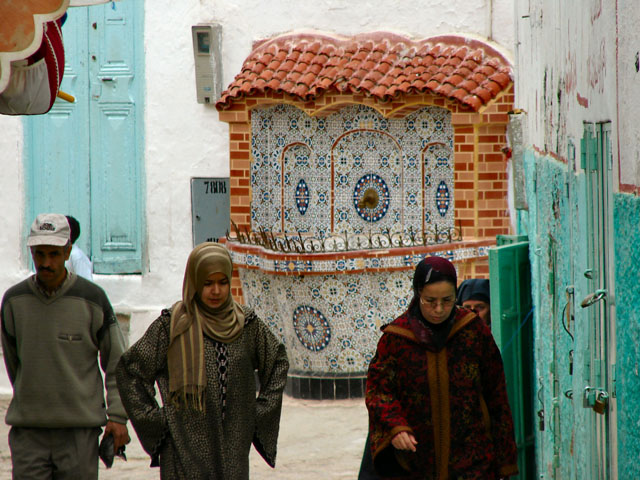 |
Every
medina is dotted with fountains. They are much less essential
now, because running water is available. In their day, getting
water was a social event. The scarves seen here are pretty common, but by no means universal in Morocco. |
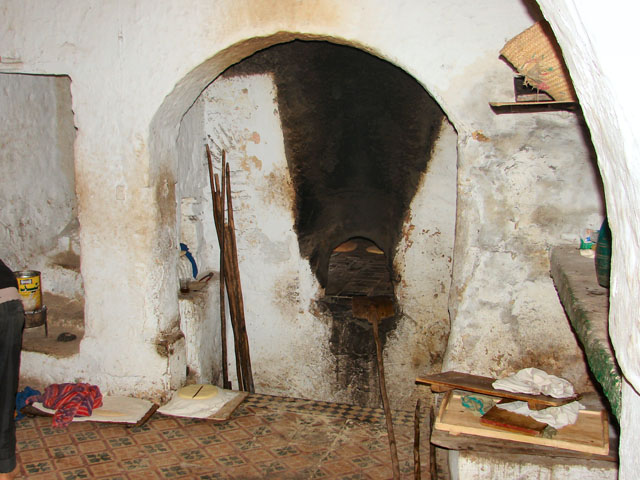 |
As
we walked through the medina, we saw women walking through the streets
carrying circular loaves of un-baked bread. This was their
destination, a community oven where everyone can get their bread baked. |
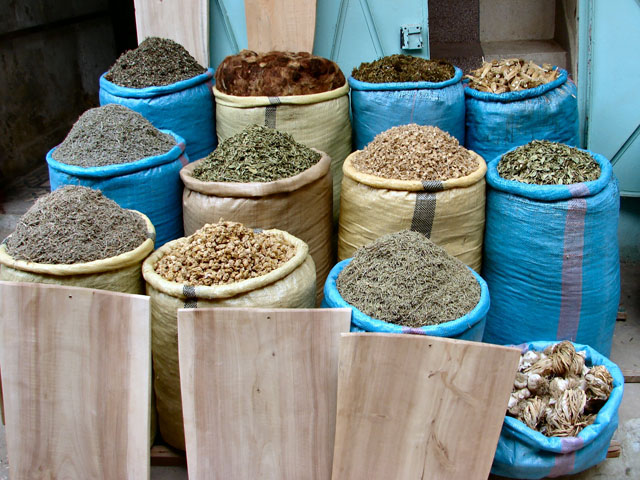 | Another feature of the medina is the market, the souk. Here we see spices for sale. |
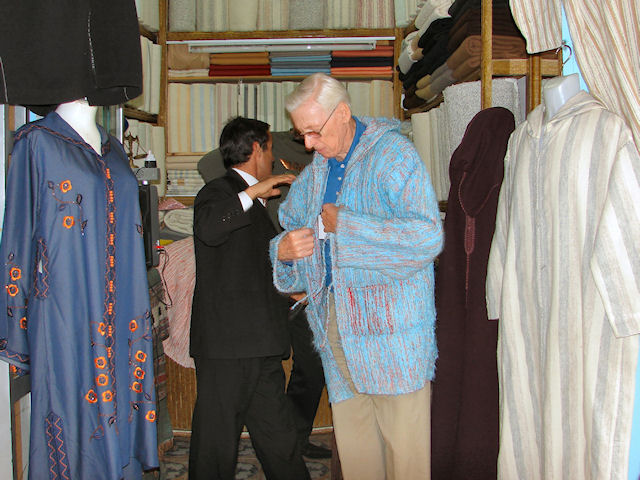 | Ouazanne
is known as the place to buy djellabas, the traditional Moroccan hooded
robe. While Maurice is trying a jacket style djellaba, the full
length version is much more commonly seen on the streets. Women's
djellabas are quite ornate, and they are generally worn for serious,
dress-up occasions. (Kaftans have no hoods.) |
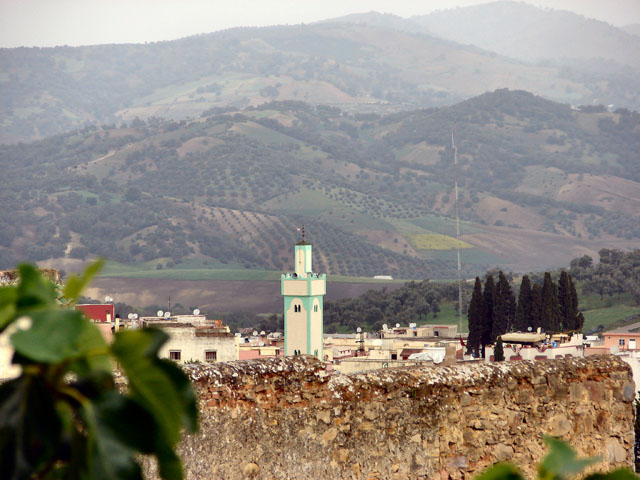 | The
Ouazanne country side, more hilly than mountainous, with a minaret in
the foreground. This minaret is associated with the university at
Ouazanne. In Turkey, it seemed like almost all the minarets were cylindrical, looking like rockets dotting the countryside. In Morocco, they are square. |
| Back to Home |
Back to Gibraltar | Forward to Fes | Back to Top |